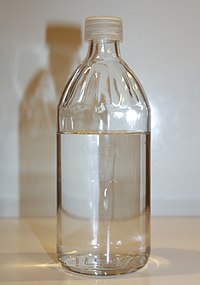
Photo from wikipedia
Abstract Novel microporous carbon materials (DCMC) with excellent electron conductivity and ultrahigh surface area (1896.9 m 2 g −1 ) are successfully prepared from discarded clothes. The porous carbon-encapsulated sulfur composites… Click to show full abstract
Abstract Novel microporous carbon materials (DCMC) with excellent electron conductivity and ultrahigh surface area (1896.9 m 2 g −1 ) are successfully prepared from discarded clothes. The porous carbon-encapsulated sulfur composites were synthesized by a feasible melting process and used as host materials for lithium sulfur batteries. Because of the unique microporous, ultrahigh surface area and irregular wrinkled surface coexisting structure, the resulting microporous carbon/sulfur (DCMC/S) composite cathode possesses a good rate capability and long-term cycling performance. The initial discharge capacity of the DCMC2/S composite electrode with 74.3 wt% sulfur content is 1082.6 mAh g −1 at a current rate of 0.2 C. At a higher current rate of 1 C, it possesses excellent cyclic performance and retained a capacity of 422.8 mAh g −1 after 500 cycles with a low capacity fading rate of 0.11% per cycle. The coulombic efficiency remains over 98% during cycling.
Journal Title: Materials Letters
Year Published: 2018
Link to full text (if available)
Share on Social Media: Sign Up to like & get
recommendations!